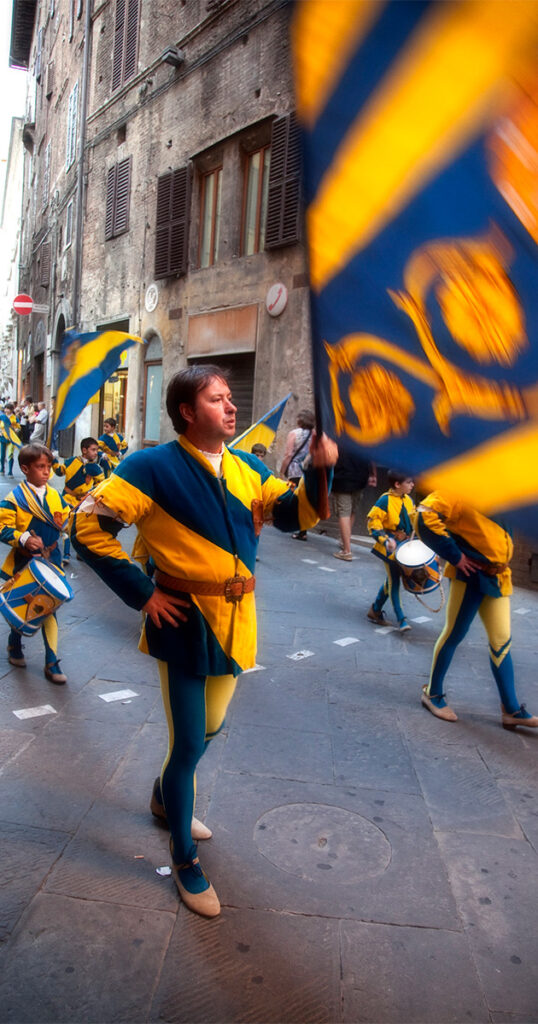A race that lasts all year round
Twice a year the city of Siena, in Tuscany, is the picturesque setting for a race of ancient tradition: il Palio.
The horse race – which has officially taken place since 1633 – is held on the 2nd July and 16th August in the very heart of the city center. The Piazza del Campo is a beautiful square with a unique shape, which is meant to resemble the folds of the mantle of the Virgin Mary, the city’s patron saint.
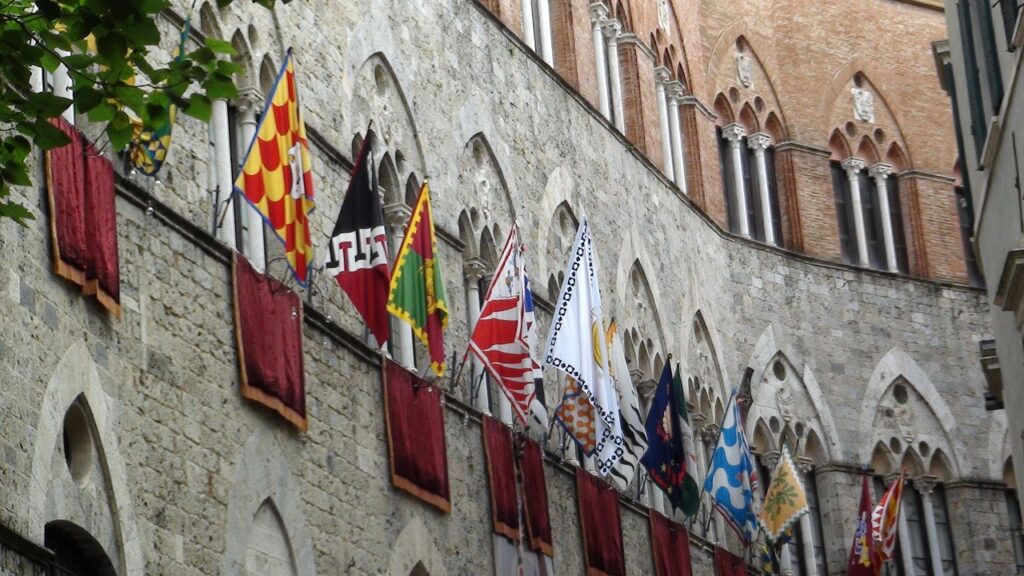
But, the square is not the only place set up for the occasion. The whole city shows signs of the rivalry that is about to be played out. The tradition of il Palio has deep roots in history and has been strongly felt by the citizens since Medieval times. It serves as a manifestation of their identity and helps keep the local cultural traditions alive.
This is clearly visible in the contrade.
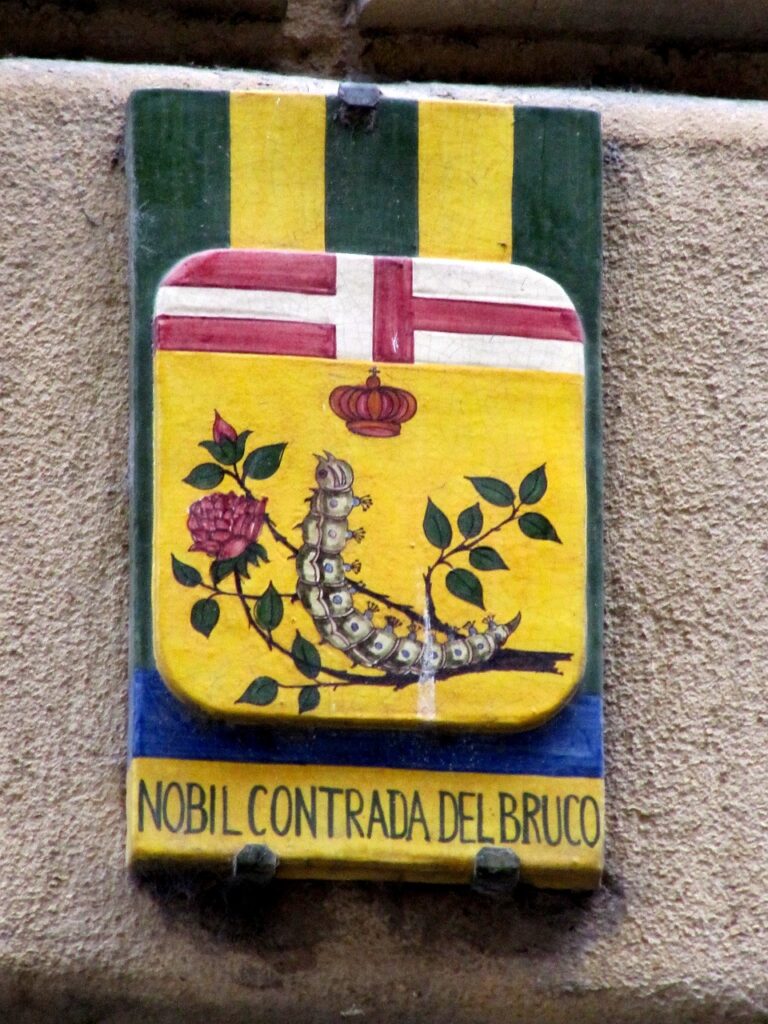
The Bruco (caterpillar) – pictured in the image above – is the symbol of one of the seventeen contrade (city quarters) that make up the city of Siena. Each contrada is marked by the name of an animal, such as the eagle (Aquila) or the she-wolf (Lupa). There are also mythological creatures among them, such as the Dragon (Drago) and Unicorn (Leocorno), or places and objects like Torre (Tower) or Nicchio (Niche). If you are from the contrada of Bruco or Drago, you are from there not once or twice a year, but all year round. This is part of your identity.
A LOCAL CELEBRATION
Like many Italian cultural traditions, il Palio is primarily a local celebration and it does not depend on tourists for its existence. Although, the tourists here are fascinated guests witnessing this rich and solid history, charmed by the full-colour picture that has been painted in front of their eyes.
Assisting il Palio is like time-travelling to centuries ago: the rituals, the clothes, the music, and every step, all will take you to those moments, repeated in time, in which the local community has celebrated itself.
The evening before the race, each neighborhood comes together for a collective supper to celebrate and strengthen their unity before the competition. Italy is traditionally a very religious country and every celebration, even the most pagan, cannot take place without the reassuring presence of the Church. On the morning of the race, during the Messa del Fantino (the jockeys’ mess), the bishop blesses the jockeys for protection, while the horses are blessed in the afternoon.
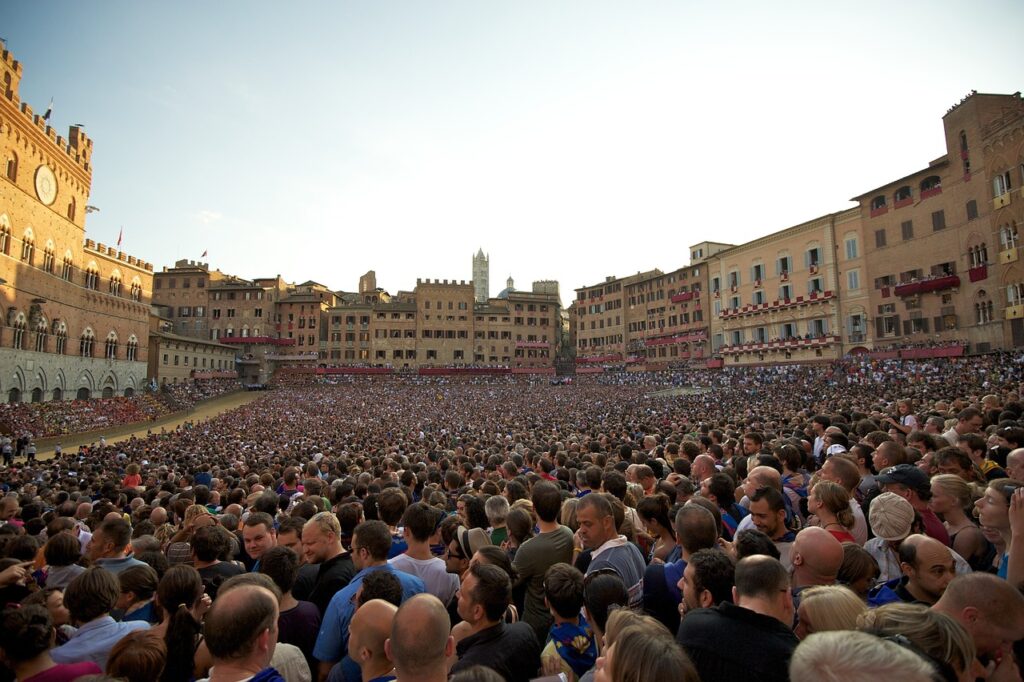
Three laps around the large square are all the expert jockeys have to prove their skills and guarantee victory to the contrada they represent.
The game is fast-paced, lasting less than two minutes, and requires intense focus and adrenaline.
It is worth noting that the fantini (jockeys) don’t use saddles, therefore, due to the high level of competition, it’s not uncommon to see horses crossing the finish line without their riders, who have been thrown off during the race.
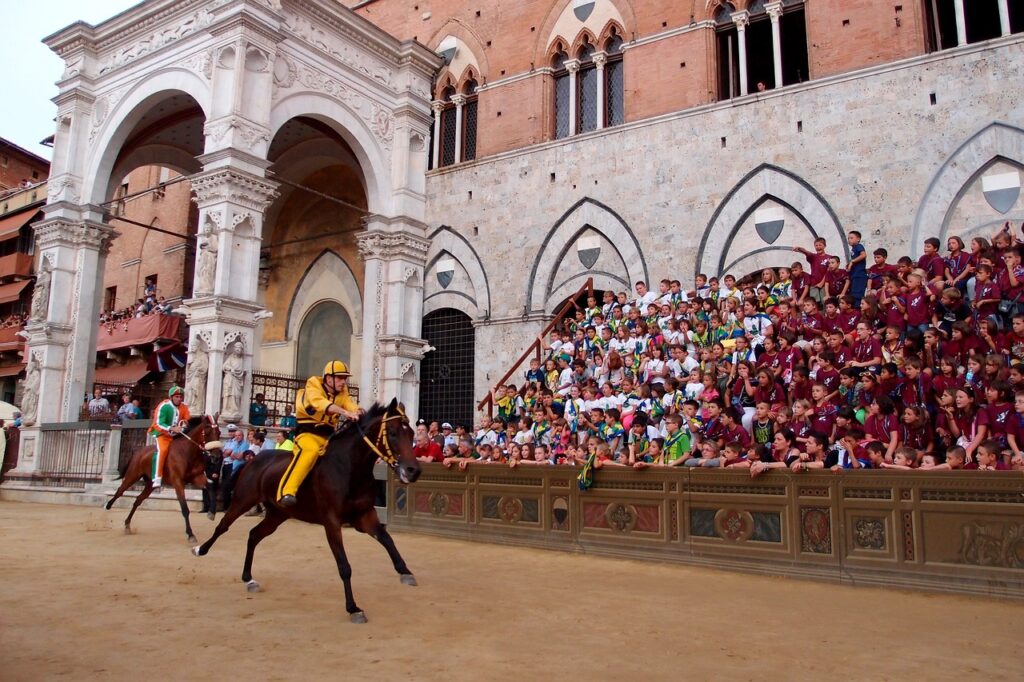
Horse racing (Photo credits: Anastasia Borisova from Pixabay)Now it’s time to get ready.
The sbandieratori (flag-twirler) are here: the Palio is about to start. Enjoy!
🛎️ CONTACT US TODAY to start planning your summer holiday in TUSCANY and experience the excitement of the Palio in Siena.
